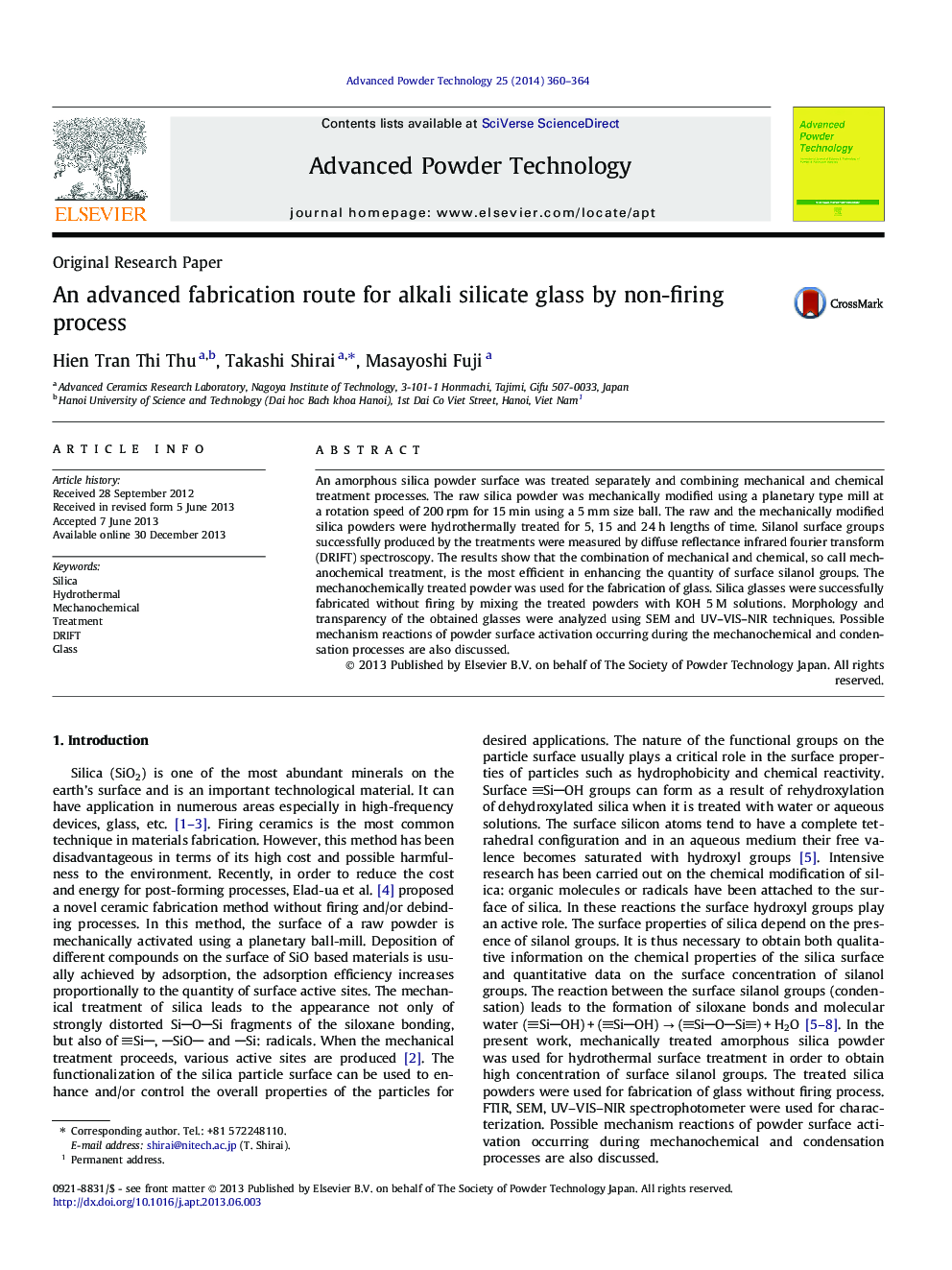| Article ID | Journal | Published Year | Pages | File Type |
|---|---|---|---|---|
| 144078 | Advanced Powder Technology | 2014 | 5 Pages |
Highlight•A non-firing process for silica glass was developed by mechanochemical and hydrothermal process.•A hydrothermal with milling process increased effective surface silanol of raw silica powder.•The proposed process provided higher transparency to the obtained silica glass.
An amorphous silica powder surface was treated separately and combining mechanical and chemical treatment processes. The raw silica powder was mechanically modified using a planetary type mill at a rotation speed of 200 rpm for 15 min using a 5 mm size ball. The raw and the mechanically modified silica powders were hydrothermally treated for 5, 15 and 24 h lengths of time. Silanol surface groups successfully produced by the treatments were measured by diffuse reflectance infrared fourier transform (DRIFT) spectroscopy. The results show that the combination of mechanical and chemical, so call mechanochemical treatment, is the most efficient in enhancing the quantity of surface silanol groups. The mechanochemically treated powder was used for the fabrication of glass. Silica glasses were successfully fabricated without firing by mixing the treated powders with KOH 5 M solutions. Morphology and transparency of the obtained glasses were analyzed using SEM and UV–VIS–NIR techniques. Possible mechanism reactions of powder surface activation occurring during the mechanochemical and condensation processes are also discussed.
Graphical abstractOH/SiH absorbance ratio of raw (M) and treated silica powders. By combining milling and hydrothermal processes the surface silanol groups could be increased by 2.4 times relative to the as received powder content. Solid body photos of fabricated glasses using only milled and milled plus hydrothermal treatment silica powders. The glass fabricated using the only milled silica powder did not show a transparent pattern. The results show that prolonging the hydrothermal treatment of the milled powder increases the transparency of the fabricated glass.Figure optionsDownload full-size imageDownload as PowerPoint slide
